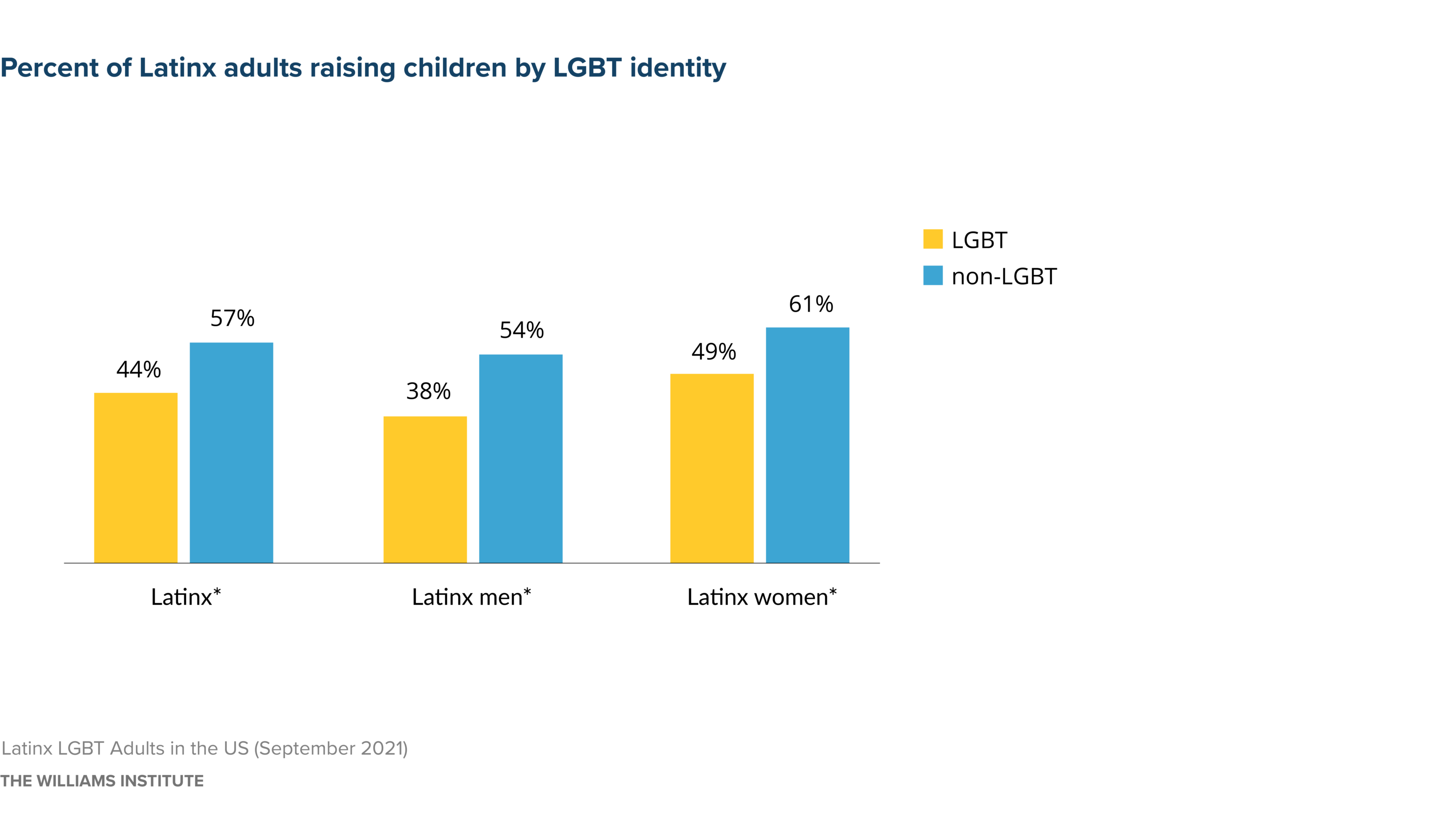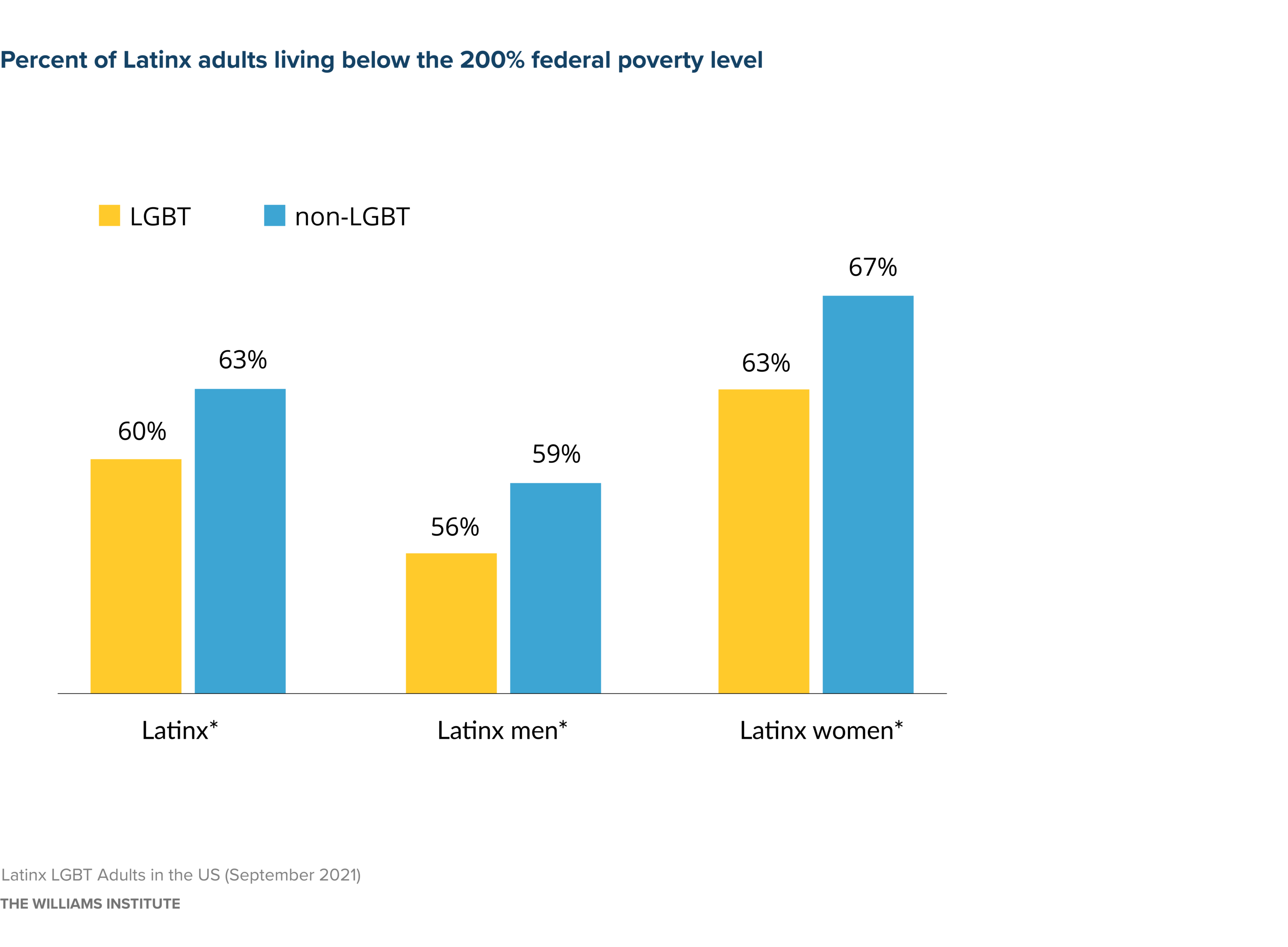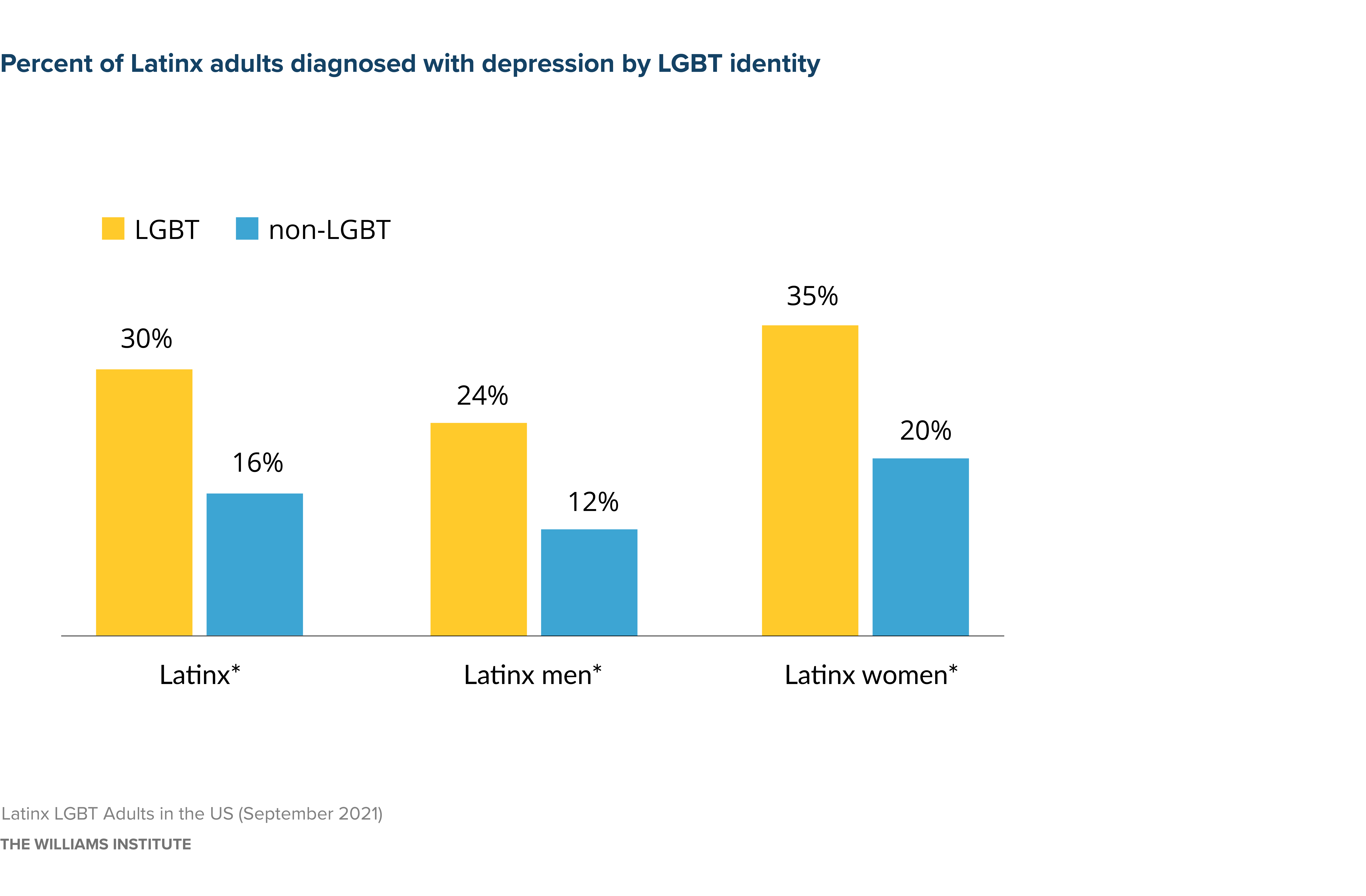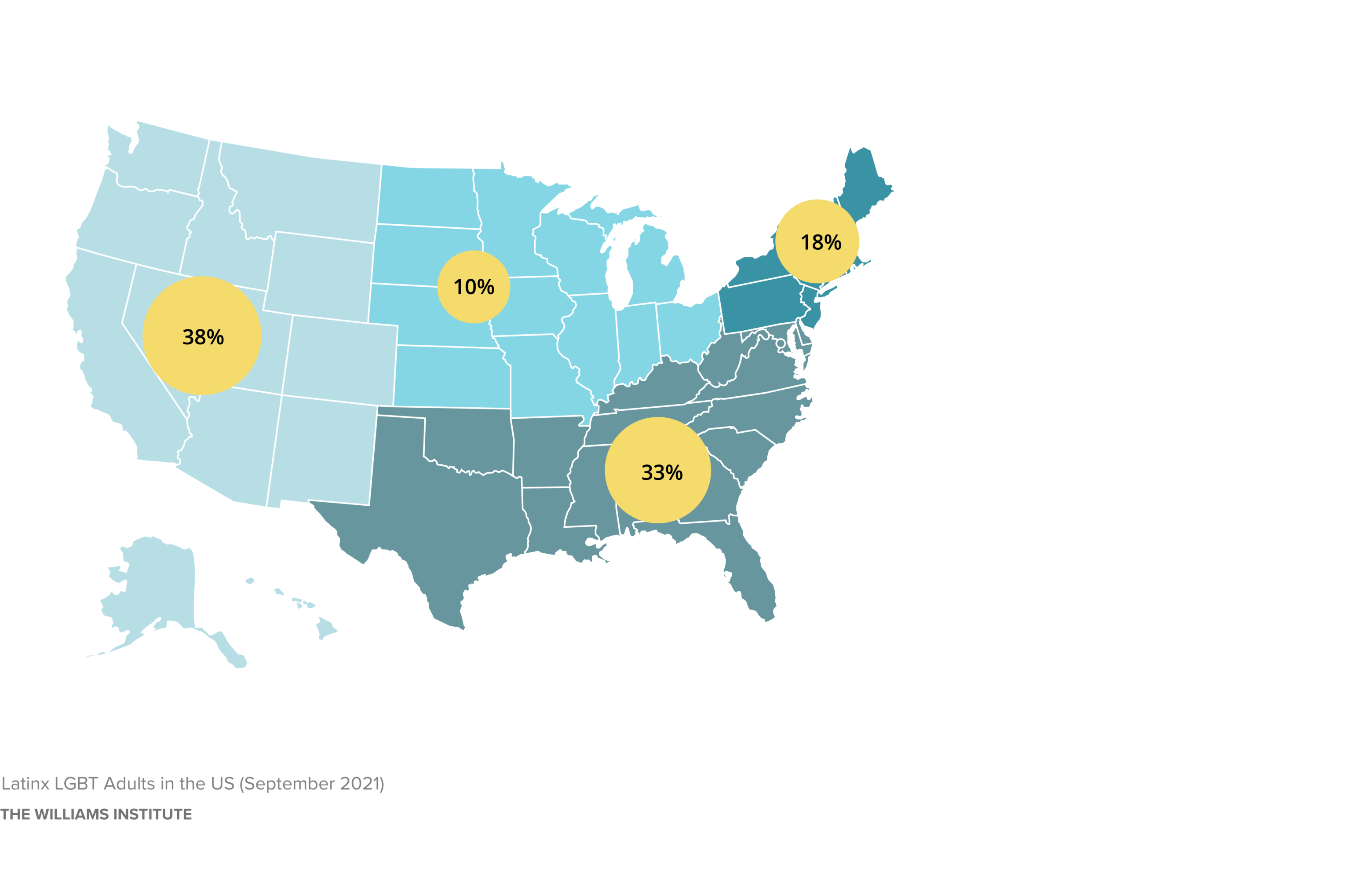More than 11.3 million LGBT adults live in the U.S. They are a part of every community throughout the country, and they are diverse in terms of personal characteristics, socioeconomic outcomes, health status, and lived experiences. While LGBT people are similar to their non-LGBT counterparts in many ways, they also show differences that illuminate their unique needs and experiences related to sexual orientation and gender identity.
About 40% of LGBT adults are people of color, including 20% who identify as Latinx. In this report, we analyze data from several sources to provide information about adults who self-identify as Latinx and LGBT. We present an overview of their demographic characteristics and focus on several key domains of well-being, including mental health, physical health, economic health, and social and cultural experiences. In addition, we compare Latinx LGBT and non-LGBT adults across these indicators in order to explore differences related to sexual orientation and gender identity among Latinx Americans. For several key indicators, we also compare Latinx LGBT and non-LGBT women with Latinx LGBT and non-LGBT men in order to explore differences related to gender. In addition, we analyze outcomes for Latinx LGBT subgroups such as Mexican, Central American, and South American LGBT people in California.
This report is part of a larger series, LGBT Well-Being at the Intersection of Race, which provides the same information for each racial/ethnic minority group in the United States. A final comparative report examines differences across racial groups among LGBT people.
Key Findings
Demographic Characteristics
- An estimated 2,253,000 U.S. adults self-identify as Latinx and LGBT. Among all Latinx adults, 5.6% identify as LGBT.
- Latinx LGBT adults in the U.S. are more likely to live in the West than in other regions: 38% of Latinx LGBT adults in the country live in the West, compared to 33% in the South, 18% in the Northeast, and 10% in the Midwest.

Note: * indicates that estimates between LGBT and non-LGBT adults are statistically different.

Note: * indicates that estimates between LGBT and non-LGBT adults are statistically different.
Mental and Physical Health
- Fewer Latinx LGBT adults report fair or poor health than Latinx non-LGBT adults: 29% of Latinx LGBT adults and 31% of non-LGBT adults report their health as fair or poor.
- Nearly one-third (30%) of Latinx LGBT adults have been diagnosed with depression, compared to 16% of Latinx non-LGBT adults. Latinx LGBT women have the highest rates of depression (35%) compared with non-LGBT women (20%) and both groups of men.

Note: * indicates that estimates between LGBT and non-LGBT adults are statistically different.
- Latinx LGBT adults are more likely to engage in high-risk health behaviors than Latinx non- LGBT adults. Among Latinx LGBT adults, 28% report current smoking and 8% report heavy drinking, compared to 16% and 3% of non-LGBT adults, respectively.
- More Latinx LGBT adults than non-LGBT adults report having mild or high disability, defined by the number of days that they experienced limitations due to poor health in the prior month. Among Latinx adults, 26% reported experiencing mild disability, defined as experiencing limitations because of poor health for 1-14 days in the past month; 11% reported high disability, defined as experiencing limitations because of poor health for 15-30 days in the past month. By comparison, 20% of Latinx non-LGBT adults reported mild disability, and 7% reported high disability.
- Compared to Latinx non-LGBT adults, Latinx LGBT adults had greater odds of being diagnosed with several serious health conditions, including asthma, diabetes, cancer, high blood pressure, and high cholesterol. These disparities exist for both Latinx LGBT men and women compared to non-LGBT men and women, with the exception of diabetes and high cholesterol among Latinx women.
Access to Health Care
- Latinx LGBT adults are more likely to have health insurance than Latinx non-LGBT adults: 28% of Latinx LGBT adults are uninsured, compared to 33% of Latinx non-LGBT adults.
- Latinx LGBT adults (12%) are more likely to have Medicaid as their primary insurance compared to Latinx non-LGBT adults (9%). Among Latinx women, 15% of LGBT women and 12% of non-LGBT women are enrolled in Medicaid.
- Latinx LGBT parents are more likely to be enrolled in Medicaid than Latinx non-LGBT adults: Among adults raising children, 11% of Latinx LGBT adults are enrolled in Medicaid, compared to 9% of Latinx non-LGBT adults.
- Similar proportions of Latinx LGBT adults (60%) and Latinx non-LGBT adults (58%) have a personal doctor.
Discrimination and Stressful Events
- Latinx LGBT adults are more likely than Latinx non-LGBT adults to say they feel unsafe: 17% of Latinx LGBT adults said that they disagreed with the statement “You always feel safe and secure,” compared to 11% of Latinx non-LGBT adults.
- Many Latinx LGBT adults reported experiences of discrimination and victimization. For example, 74% of Latinx LGBT adults reported having experienced everyday discrimination in the prior year (such as being treated with less courtesy than other people), 42% reported experiencing physical or sexual assault at some point as an adult, and 69% reported experiencing verbal assault or abuse at some point as an adult. Similar percentages of Latinx non-LGBT adults report experiencing discrimination and violence.
- Many Latinx LGBT adults also reported financial and job-related stress. For example, 62% reported not having had enough money to make ends meet in the prior year, 17% reported being fired or laid off in the prior year, and 30% reported experiencing a major financial crisis in the prior year. Latinx non-LGBT adults reported similar rates of financial and job-related stress.
Resiliency
- The majority (64%) of Latinx LGB adults and 40% of Latinx transgender adults reported feeling connected to the LGBT community.
- Less than half (43%) of Latinx LGBT adults reported feeling connected to the Latinx community.
- About two-thirds (68%) of Latinx LGBT adults reported feeling supported through their social circles.
In addition to presenting national data, we compared Latinx LGBT and non-LGBT adults on several key outcomes by region in the U.S.: West, Northeast, South, and the Midwest. Overall, patterns identified within each region reflect what we found across the U.S. Full details on the regional analyses can be found on page 34 of this report.
Download the full report
Download the executive summary in Spanish



